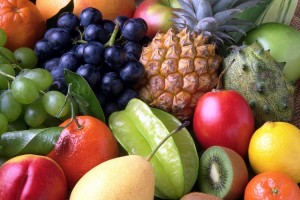Feeding program for rural schools
The main objective for this school feeding program is to provide a daily meal for at least 1000 malnourished children in Kenya so that they can attend school and further their education.
Donations
Background
Kenya is a country located in Eastern Africa is one of the poorest countries in the world and is affected by high poverty, recurring natural disasters such as droughts, floods, and very high HIV/AIDS rate. Despite the fact that some regions of the country experiencing adequate rainfall and commercial agriculture, problems of storage and transportation make food distribution pathetically inefficient. However large parts of the country do not receive adequate rainfall or practice modern crop husbandry. These factors have led to high food insecurity and created a situation where children in many rural communities go hungry and therefore do not have motivation to attend or complete even the most basic education. Poverty remains widespread, with great majority of Kenyans living on less than $1 a day ((USAID report)

School Feeding Beneficiary Selection:
The program targets marginal schools, particularity in rural areas. ICO through its patrons and partners identify communities with the greatest needs for this program. In addition communities can send requests to ICO directly stating the assistance they need for their school going children. Through our research on each community and school, it must be evident that the parents are actively involved in the school’s activities, and that the children are in need of nutritional intervention. Priority will be given to poor schools in rural areas where protein and energy malnutrition (PEM) are clearly a problem hindering school attendance and/or completion. It is desirable that the community has an active Parent Teacher Association (PTA) before the school can be accepted in the school-feeding program. This is done to ensure full community support of the program. ICO works through a contractual arrangement with the PTA, in order to promote community ownership. This results in a program that is both accepted and implemented by the community, in partnership with ICO, thus ensuring long-term sustainability.
The distribution of the ration will be either is daily, weekly, bi-weekly or monthly
1. Rations are delivered to the school and placed in the care of an
identified point person, who then distributes these to the children before
the day’s classes begin or during the first break as well as during lunch time.
2. The ration and distribution are recorded by the school and in the ICO monitoring report book.
3. The monitoring forms are completed daily and a monthly report compiled so that an appointed ICO supervisor can confirm the figures.
4. Distributions and daily activities at the school are randomly ’spot checked’ by ICO site managers (or coordinators) on a regular basis.
5. The effects of the intervention on learning are gleaned from the educators and test results.
6. ICO strives to encourage educational participation and excellence
through rewards (and/or awards) to school children who participate in the the
program and are consistent high achievers.
The impact of the project on target communities are assessed by:
1. Increased enrolment in schools and reduced
absenteeism
2. Improved children’s learning ability and scholastic
results improves children’s overall attention span and
school performance
3. Improvement of micro-nutrient deficiencies
4. Alleviation of short-term hunger
5. Food security to those most vulnerable
6. Reduction of crime as most school going age children
participate in the schooling
7. Reduced the strain on families, particularly strain on
women who tend to be the most vulnerable

Evaluation
This is done through feedback from school teachers, parents, community leaders and through a survey carried out at the end of each school term or school year.
Budget
ICO estimated that it needed initial funding of US $ 100, 000 to get the project off the ground and running, future expansion and general management of the program.
ICO foresees this program as morphing in the long term into the establishment of community food banks and nutrition assistance for the aged and neediest in poor rural communities. The program rely on donations of non-perishable food contributions from the USA, Kenya and elsewhere.
